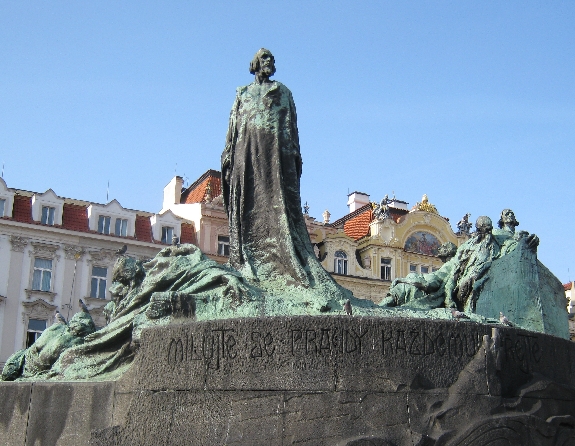
Following my recent busy July weekend, I am now on annual leave until the end of the month. For a variety of reasons, we’ve decided to have a stay-at-home holiday or ‘staycation’ as I gather Americans call it. For these next two weeks, we’ve written out a list of places in or around Prague that we either want to visit for the first time, or re-visit because we missed something previously, or because we want to go in summer having previously visited in another season.
On Tuesday 17th July, we visited Melník, a small town which lies around 35 km directly north of Prague at the confluence of the Vltava and Labe/Elbe rivers. Melník comes into the third category outlined in the previous paragraph as we had been there once previously at the beginning of January 2009. On that occasion, there was snow lying on the ground and the two main attractions were both closed! It was also a few weeks before I commenced writing this blog and some months before I bought my current camera, thus meaning I have no written or photographic record of that trip.
The historic centre of Melník is situated on the top of a hill overlooking the confluence of the two rivers with a steep drop down to the water’s edge. Right on top of the hill stand the two most significant buildings in the town – the Church of St. Peter and St. Paul with its tall tower, and ‘Zámek Melník‘, a Renaissance château belonging to the Lobkowicz family.

We drove to Melník and upon arrival, found a suitable parking spot for the car, and then walked into the centre of the town. We headed for the Church and Zámek, and just before reaching them, decided to have a late lunch at Restaurace U Rytiru, sitting under one of the red Budweiser umbrellas on the right in the photograph above.

Then it was off to see the somewhat macabre feature of the Church – the old crypt which is an ossuary containing the bones of more than 10,000 people, dug up to make room to bury plague victims in the sixteenth century. When the crypt, which had been previously walled up, was re-opened in the late nineteenth century during renovation work on the Church, a professor at Charles University in Prague undertook anthropological studies on the bones and arranged them into some interesting patterns including this cross.

Walking between the Church and Zámek Melník, we reached a spot from where there is a wonderful view across the Central Bohemian countryside and, in the foreground, the confluence of the Vltava and Labe/Elbe rivers. A navigation channel and lock, built in the first decade of the twentieth century, allows boats to circumvent the first few unnavigable kilometres of the Vltava. The metal plaque shown below, explains which waterway is which!

We then headed for Zámek Melník, not least because of the onset of a very heavy thundery downpour! This photograph, taken in the courtyard of the Zámek, shows some of the sgraffito decoration on the exterior walls of the building.

There was also this sundial on one of the courtyard walls which was unfortunately rather redundant in view of the weather 😉

We took a most enjoyable tour of the interior of the Zámek but, as is sadly now commonplace in many historic houses, no photography was allowed. However, we did appreciate being able to walk through the various rooms at our own pace, without an accompanying guide. As might be expected, there was a variety of antique furniture and historic paintings to observe. We particularly liked the intricate decoration of many of the ceilings.

Before the heavens opened once again, I did manage to get this photograph which shows the Church tower, together with the vines that grow on the steep slope below the Church and Zámek Melník. Most Czech wine is produced in Moravia but some excellent, mainly white wines, are also produced in Bohemia, particularly in and around Melník.
The vineyard below the Church and Zámek Melník can also be clearly seen in the photograph below which I took, soon after we set out on our journey back to Prague by a different route to the one by which we came.

PS Before anybody points it out, I do know that there should be a hácek above the ‘e’ in ‘Melník’, just as there should be one above the ‘c’ in ‘hácek’. But as I have previously explained, for technical reasons beyond my comprehension, if I put one in, it will appear as ‘M?lník’ and ‘há?ek’.

















